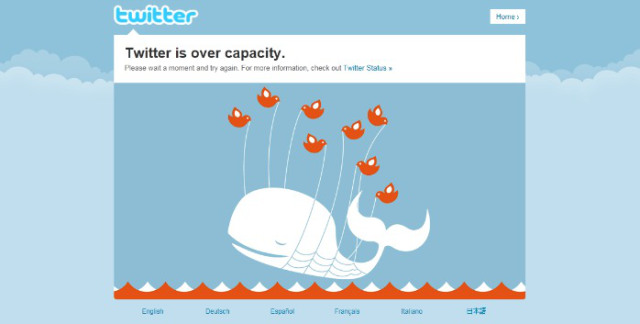
Last week saw the departure of Dick Costolo from Twitter. Costolo had been the CEO of Twitter since he took over from Ev Williams in October 2010. While not a co-founder of the network, Costolo has grown Twitter from millions to billions in revenue. So what led to such a fundamental part of Twitter leaving his post?
There were rumours of ugly power struggles in the board-room and more recently there were also rumours of secretive meetings and bizarre factors influencing decision making.
But all of this is hiding some bigger problems that Twitter has and needs to address regardless of who is at the helm.
Network Outages:
Twitter has had some high profile outages and security issues that have grabbed headlines in the past. For example, when Ellen DeGeneres posted her famous selfie from the Oscars, Twitter was down for 20 minutes. What Twitter does brilliantly is being used to follow and contribute to live events, so when outages happen at these high profile events, this is particularly noticeable.
Ad Revenue:
Twitter currently has a valuation of $3.7 billion, but its ad revenue in 2014 was only $45 million. This might seem like a reasonable sum, but compared to other online advertising platforms such as Facebook, its ad revenue is tiny. While Facebook does have more users and a larger valuation, you cannot escape the fact that Twitter has not been able to translate its network into a strong commercial proposition.
Avalanche of Content:
Twitter is very proud of the number of Tweets that people send a day, as it should be: 500 million tweets daily is a staggering amount of content. But this has implications. To get a message seen is becoming more and more difficult on Twitter, and that may be a factor for corporate Twitter accounts. Twitter doesn’t seem to have made the link between post visibility and advertising which Facebook has successfully made.
Dormant and Non-Existent Accounts:
Twitter does attract a lot of Twitter users on a monthly basis, but it has two problems with its accounts. Firstly, there are a large number of dormant accounts which are skewing the numbers, although these should not be included in the 300 million monthly active users. More concerning however is the fact that people use Twitter to follow live events but do not have an account and do not log-in: they are using it as a news and opinion source but have not signed up.
Twitter is Public:
Twitter is an entirely public network where, unless you protect your account, everyone sees everything. This is one of its strengths. But when Twitter turns nasty with trolls and other online abuse, this is also very public. Twitter has not always acted quickly enough to address abuse claims and to publicise its reporting policy and this is a big reputational issue.
Let’s not forget that Dick Costolo oversaw Twitter revenue growth from $28 million to $1.4 billion, and Twitter still attracts over 300 million users every month. But without addressing the above issues, Twitter will face more awkward questions and face more changes at the top.
This article was syndicated from Business 2 Community: The Problem With Twitter
More Digital & Social articles from Business 2 Community:




